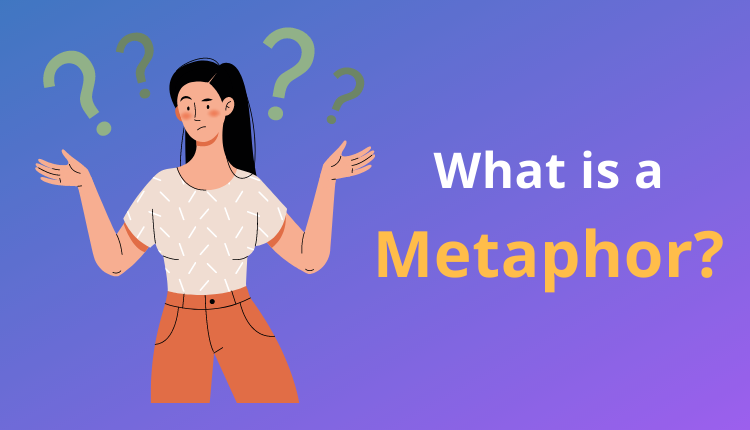‘She is a couch potato’, ‘Love is like fine wine’, ‘He has a heart of gold’ … are you wondering why the subject is being compared to a thing that has no apparent connection, and yet it makes sense? Welcome to the world of metaphors!
Table of Content:
What is a metaphor?
Put simply, a metaphor is a way of expressing something in terms of another. Such expressions connect words which have completely different meanings and help us talk about things we observe and experience every day.
Metaphors are often used when one wants to explain things in a unique, or creative way, particularly in poetry or prose. However, metaphors are never meant to be taken literally. Anyone who is not familiar with metaphors may find the comparison strange (or sometimes rude). For instance, when someone tells a child, “you are the apple of my eye”, they are not comparing the child with an apple per se. It simply means they love or are too fond of the child. If one goes by the literal translation, metaphors sound very silly. So, as a golden rule (and, that’s the fun part!), one must go beyond the words and try to decode its true meaning.
What are the types of metaphors and how to use them?
- Direct/standard metaphors: The meaning of these metaphors can be understood easily, even by the new language learners as it makes a direct comparison and are typically a no-brainer. For instance: My friend is an angel.
- Visual metaphor: One has to be really creative to conceptualize the meaning behind these metaphors. The comparison between the object and subject can only be imagined. For instance: He’s a wild animal when he plays basketball!
- Implied metaphor: These metaphors give away the meaning of an idea, albeit subtly. It contains enough imagery for the listener or reader to understand. For instance: He cried a river when he lost the game.
So, we hope you are clear about metaphors. Go on and add colour and creativity to your speech by acing to speak metaphorically!

